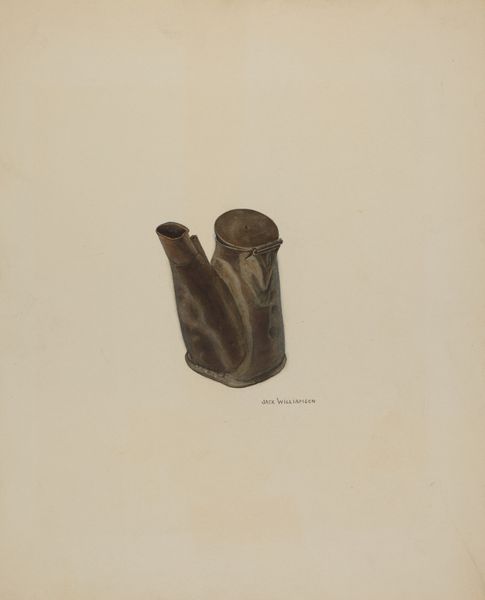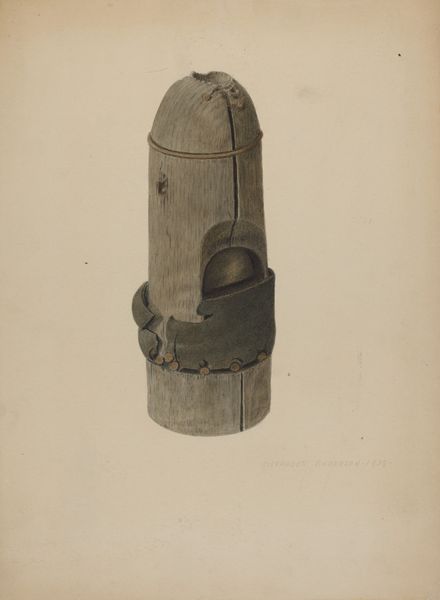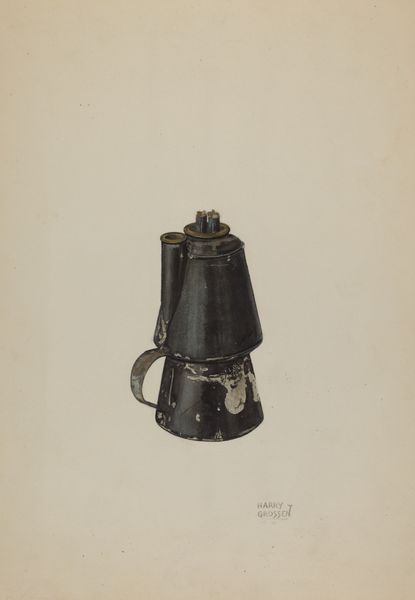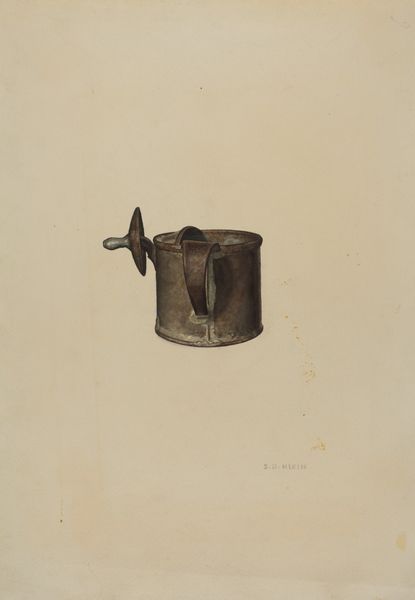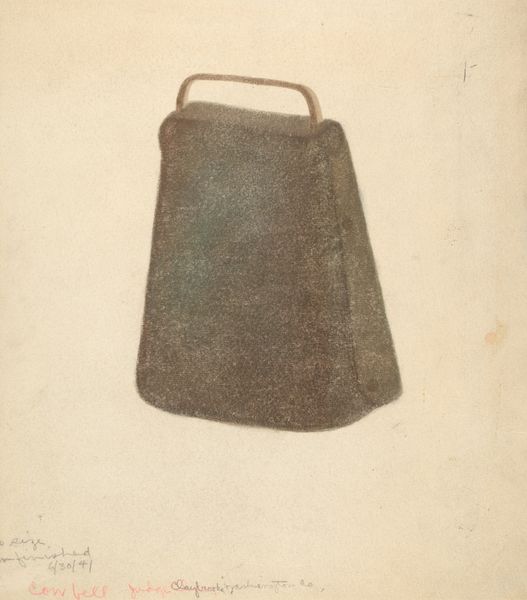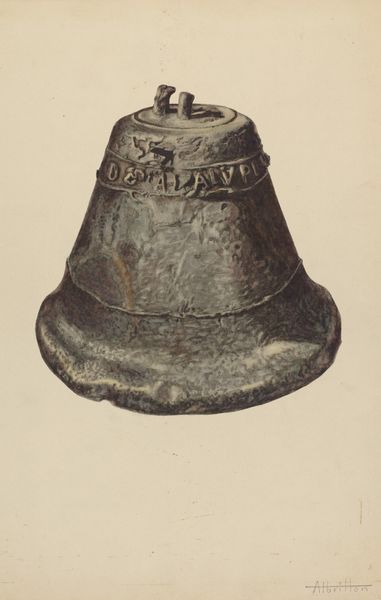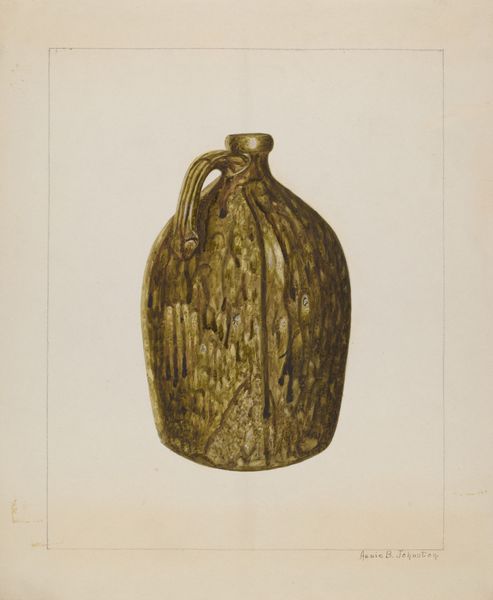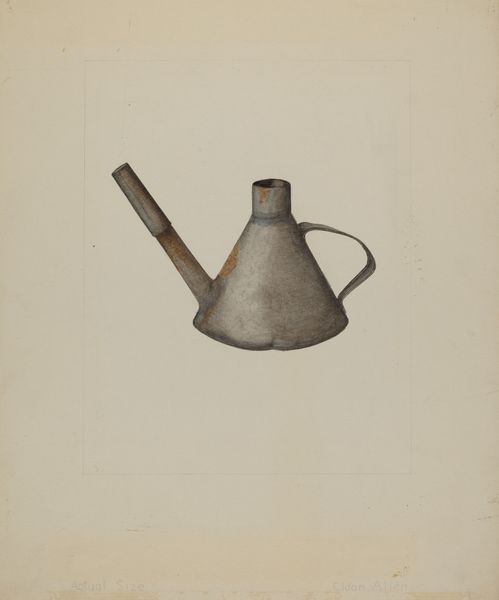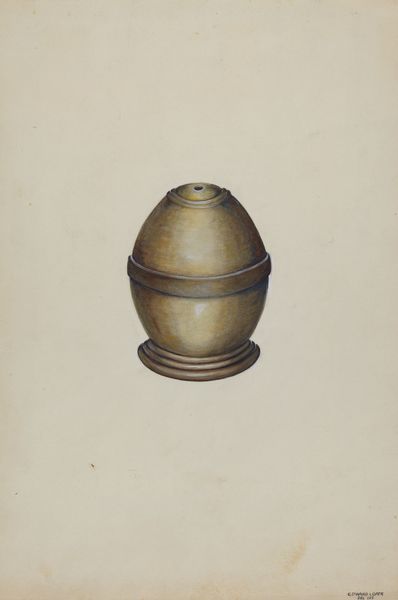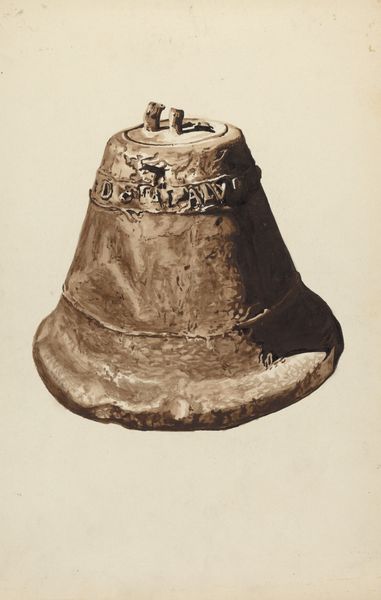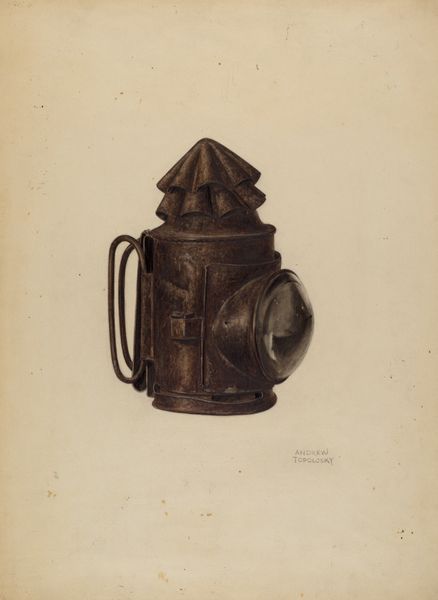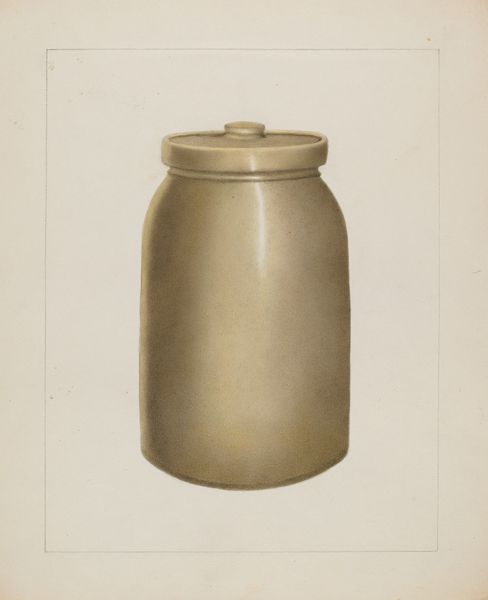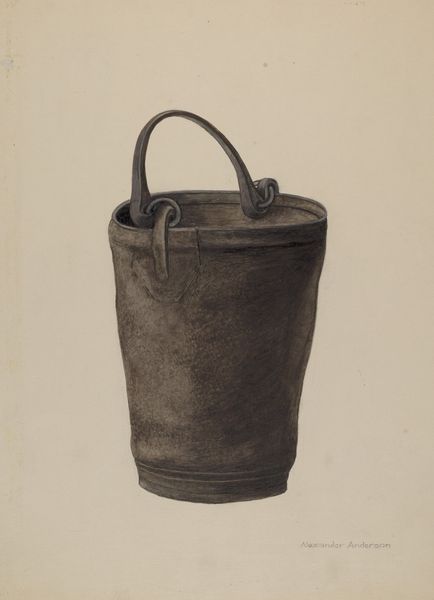
drawing, watercolor
#
drawing
#
water colours
#
oil painting
#
watercolor
#
watercolor
Dimensions: overall: 29.2 x 22.9 cm (11 1/2 x 9 in.) Original IAD Object: 3 3/4" high; 2 1/2" wide
Copyright: National Gallery of Art: CC0 1.0
Editor: Here we have Charlotte Winter's "Lamp," likely rendered around 1936. It's a watercolor drawing of what seems to be, quite simply, a lamp. There’s a certain quietness to it, a domesticity. What do you see in this piece? Curator: This isn't just about domesticity; it's about labour and access, or perhaps the lack thereof. In 1936, in the midst of the Great Depression, something like a lamp, a source of light, speaks volumes about socioeconomic disparities. Winter's choice of such an ordinary object compels us to ask: Who had access to such a luxury during this time, and whose labour produced it? How does it reflect the inequalities in domestic settings? Editor: That's a perspective I hadn't considered. I was just seeing the form and light. Curator: Think about the artist's choices. Watercolor can be accessible but time consuming. The muted color palette reinforces that somber tone, the material realities of many during this era. It’s also pertinent to explore Winter's gender at the time. Was her choice of subject an expectation based on the artist's gender, or did it subvert it? How can we explore women’s role at the time within that socioeconomic context? Editor: So you're saying the drawing invites us to investigate broader issues of inequality, class, and potentially gender, instead of just seeing a still life of a household object. Curator: Exactly! And that's the power of art; even seemingly simple subjects can unlock complex societal reflections when viewed through the lens of history, sociology, and critical theory. By doing so, it serves as a form of political resistance and promotes positive social change. Editor: I’ll definitely think about everyday objects differently from now on! It gives a totally fresh outlook on the artistic practice. Curator: I think it allows a deep, meaningful connection and dialogue with the past and our present realities, urging action in that way.
Comments
No comments
Be the first to comment and join the conversation on the ultimate creative platform.
